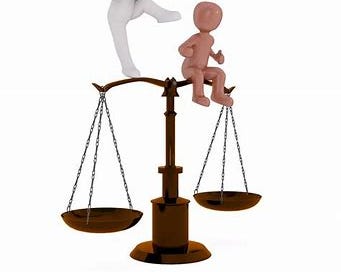The Art of Comparison 12: Probabilities
To get more into the meat of competitive strategy, we focus on ots founding concepts from the conceptual language of the Chinese characters in Sun Tzu’s The Art of War. This is the last part of chapter one, section five. It has nine lines:
<Obtain> <calculate> <many> <also>
<Not yet> <battle> <and yet> <temple> <count> <no> <victory> <one>
<Obtain> <calculate> <little> <also>
<Many> <calculate> <victory>
<Little> <calculate> <no> <victory>
<And yet> <situation> <without> <calculate>
<We> <by means of> <here> <observe> <it>
<Victory> <defeat> <see> <will>
We will look at each of these lines from literation in The Art of War Plus the Ancient Chinese Revealed.
We start with the first.
<Husband> <not yet> <battle> <and yet> <temple> <calculate> <victory> <are>
This means that we economize (“husband”) until the “temple” calculates our odds of winning. This calculation is the comparisons that are our basis for understanding our strategic positions.
Who is this “temple” doing the calculating? Sun Tzu’s era was during the first emergence of Taoism, a philosophy built upon the mysterious balancing forces of nature, but there were Taoist temples at the time. This was hundreds of years before Confucius and Buddha. The temples of the time were dedicated to the worship of the gods of nature (the key factors of climate and ground), very much like the Western pantheons, plus the worship of success (“victory”). The “temple” focused on our situation that affected our success: the advantages and disadvantages of our position.
<Not yet> <battle> <and yet> <temple> <count> <no> <victory> <one>
<Obtain> <calculate> <little> <also>
We delay (“not yet”) our meeting competitors (“battle”) if we cannot “count” on a successful focus (“one”). The “obtain” is the calculation of what we can potentially win in moving to new positions. We must first realize that we have to possibility of obtaining less than we expect.
<Many> <calculate> <victory>
<Little> <calculate> <no> <victory>
Our goal is always gaining more than the move costs us, “many.” Many advantages or a many potential rewards, means success. Few advantages and few potential rewards means that we are unlikely to win. This is the heart of strategic comparison, a balancing of the advantages and disadvantages of making any strategic move.
The Lack of Analysis
<And yet> <situation> <without> <calculate>
And yet, most of us do not analyze our positions (“situations”). Instead, we react based on our emotions of the moment. What drives our emotions? Our personalities and our instincts of flight or fight. In our article on self-control, we discussed how emotional decisions are dangerous because they prevent us from seeing all of our options. Even our trained reactions to specific situations and conditions can blind us to what is possible.
So, we invest our time in looking at the bigger strategic picture of our positions. We leverage two simple comparisons. What are our odd of winning and losing? How do the odds of losing compare with what we might win? Of course, we can know neither of these things exactly, this is why we must “calculate” the odds, that is, the probabilities. Not what might happen, which is anything, but on what is more likely to happen, a likely range of possibilities.
The Nature of Strategic Science
<We> <by means of> <here> <observe> <it>
This “by means of” means the methods of the science of strategy. The “here” focuses us on our current position. Strategy is a science. Science is a method of observation, a methodology, not a belief system. It takes place from our subjective point of view, “here.” We must avoid the illusion of objectivity. Our “here” is subjective, judged by the values and goals of our missions. We must “observe” our “here” in order to use this methodology. Trusting science is not trusting someone else’s beliefs and values. The method is one of observing for ourselves so we can compare what we see to our own goals.
The scientific method is based on falsifiability, not on proof. All logic. including all mathematics, is based on a few unprovable propositions. We accept that they could be wrong. We must hold beliefs to use the scientific method, but the method doesn’t determine what we believe. New areas are opened up by questioning underlying beliefs. In geometry, for example, rethinking the assumptions of Euclid opened up new areas of geometry that made Einstein’s ideas possible. How long a theory has stood does not prove it. Ideas of Aristotle stood for more than a thousand years, but they were wrong. Nor is any theory proven by how well it works. Newton’s gravity worked fine, but Einstein’s works better. Nor is anything proven or disproven by its conformance to any theory. No theory is proven. Nor is it anything judged true by how many people trust it. In the science of strategy, the opportunity is more often found in going against the crowd.
Final Thoughts
<Victory> <defeat> <see> <will>
The final test of any science is how productive it is, the results it produces. We do not know now what our results will be, but we will see that in the future. We use the methods of science because they produce results, but only some of the time. Most of our hypotheses are wrong. Most exploratory moves turn up little.
Our goal is to be more often right than those with whom we are competing, that is, those to whom we are compared.
And who decides what “victory” and “defeat” really are? Others because we make move to change the way they position us in their minds. But to influence them, our personal priorities must align with theirs. We join with like-minded individuals. Our missions must overlap, especially with those of our intimate partners.





